Intrinsically safe pressure transmitters for applications in petrochemical, mining, pharmaceutical, and food/beverage industries. Monitor pressure safely in hazardous areas with certified IS transmitters and barriers.
Intrinsically safe pressure transmitters are essential components for accurate and reliable pressure measurement in hazardous environments where flammable gases, vapors, or dust pose a risk of explosion. These specialized transmitters, certified to stringent standards such as ATEX, IECEx, FM, or CSA, are designed to operate as part of a complete intrinsically safe system, typically incorporating a 4-20mA output signal and used in conjunction with an intrinsically safe barrier. The barrier limits electrical and thermal energy entering the hazardous zone, preventing ignition even under fault conditions. Selecting the correct transmitter requires careful consideration of the hazardous area classification, gas group, temperature class, and appropriate certification to ensure safe and compliant operation in industries such as petrochemical, mining, pharmaceuticals, and food processing.
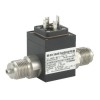 DMD331 Compact Differential Liquid Pressure Sensor - Wet wet differential pressure sensor with a high overpressure rating on both positive and negative pressure side for protection against damage.
DMD331 Compact Differential Liquid Pressure Sensor - Wet wet differential pressure sensor with a high overpressure rating on both positive and negative pressure side for protection against damage. DMK 331 Ceramic Diaphragm Industrial Pressure Transmitter - This pressure transmitter can be supplied with a PVDF process connector so that it can be used to measure the pressure of acids and other corrosive chemicals.
DMK 331 Ceramic Diaphragm Industrial Pressure Transmitter - This pressure transmitter can be supplied with a PVDF process connector so that it can be used to measure the pressure of acids and other corrosive chemicals.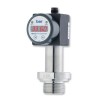 DS200P Sanitary Low Range Pressure Gauge, Switch and Sensor - All in one electronic switch, gauge and sensor designed specifically for use in the food, drink and biomedical industry for measuring process pressures.
DS200P Sanitary Low Range Pressure Gauge, Switch and Sensor - All in one electronic switch, gauge and sensor designed specifically for use in the food, drink and biomedical industry for measuring process pressures.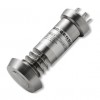 DMP331P Hygienic Flush Pressure Transmitter - Sanitary pressure sensor wth exposed diaphragm with no crevices for high temperatures up to 300 Degrees Celsius in ranges from 100mb up to 40 bar gauge or absolute
DMP331P Hygienic Flush Pressure Transmitter - Sanitary pressure sensor wth exposed diaphragm with no crevices for high temperatures up to 300 Degrees Celsius in ranges from 100mb up to 40 bar gauge or absolute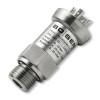 DMP331 Precision Pressure Transmitter - Stainless steel pressure transmitter with ranges from 100mbar up to 40 bar gauge or absolute. Special options for ATEX , SIL2 and compound ranges.
DMP331 Precision Pressure Transmitter - Stainless steel pressure transmitter with ranges from 100mbar up to 40 bar gauge or absolute. Special options for ATEX , SIL2 and compound ranges. DMP 335 All Welded Stainless Steel Diaphragm Pressure Sensor - All welded stainless steel diaphragm pressure sensor for mobile hydraulics, refrigeration or oxygen applications. This pressure sensor is available in the ranges from 6 bar up to 600 bar gauge with a 4-20mA or 0-10Vdc output signal.
DMP 335 All Welded Stainless Steel Diaphragm Pressure Sensor - All welded stainless steel diaphragm pressure sensor for mobile hydraulics, refrigeration or oxygen applications. This pressure sensor is available in the ranges from 6 bar up to 600 bar gauge with a 4-20mA or 0-10Vdc output signal. DPT200 High One Side Overload Differential Pressure Sensor - DP transmitter for measuring pressure difference between two pressure points which can tolerate up a very high overload pressure independently on either the positive or negative side port or both together at the same time.
DPT200 High One Side Overload Differential Pressure Sensor - DP transmitter for measuring pressure difference between two pressure points which can tolerate up a very high overload pressure independently on either the positive or negative side port or both together at the same time.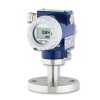 XMPi Process Plant Gauge and Absolute Pressure Transmitter - Process transmitter for measuring vacuum, steam, food, pharmaceutical, oil, gas and other pressure readings necessary for the monitoring and control of bulk production processes.
XMPi Process Plant Gauge and Absolute Pressure Transmitter - Process transmitter for measuring vacuum, steam, food, pharmaceutical, oil, gas and other pressure readings necessary for the monitoring and control of bulk production processes.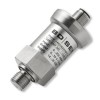 DMP343 Low Range Pneumatic Pressure Sensor - DMP343 pneumatic pressure sensor for measuring very low range pressures on pneumatic control systems, heating, ventilation and air conditioning systems (HVAC) .
DMP343 Low Range Pneumatic Pressure Sensor - DMP343 pneumatic pressure sensor for measuring very low range pressures on pneumatic control systems, heating, ventilation and air conditioning systems (HVAC) .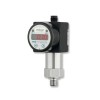 DS210 Combined Low Pressure Switch, Indicator and Sensor - Low range three in one pressure switch, pressure indicator and pressure sensor for use on pneumatics and HVAC applications.
DS210 Combined Low Pressure Switch, Indicator and Sensor - Low range three in one pressure switch, pressure indicator and pressure sensor for use on pneumatics and HVAC applications.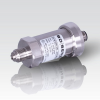 DMP 336 Hydrogen (H2) Gas Compatible Pressure Transmitter - All stainless steel 316L welded wetted parts pressure transmitter for measuring hydrogen gas
DMP 336 Hydrogen (H2) Gas Compatible Pressure Transmitter - All stainless steel 316L welded wetted parts pressure transmitter for measuring hydrogen gas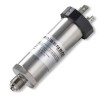 DMP331i High Accuracy Pressure Transmitter - High precision pressure transmitter with an accuracy of 0.1%FS BSL NLHR and digitally adjustable pressure ranges from 400mb up to 40 bar gauge & absolute.
DMP331i High Accuracy Pressure Transmitter - High precision pressure transmitter with an accuracy of 0.1%FS BSL NLHR and digitally adjustable pressure ranges from 400mb up to 40 bar gauge & absolute.
- 5 to 20 psi absolute ambient 4 to 20 ma pressure transmitter
- Barometric 550 to 1150 hPa abs high resolution pressure transmitter
- Powder filter blockage monitoring pressure transmitter
- Near-atmospheric pressure transmitter for hazardous gas test chambers
- Solvent tank nitrogen blanketing monitoring with all welded IS/SIL2 bidirectional pressure transmitter
- -10…30 kPa g compound range inert gas pressure transmitter for ship IG system
- Low pressure methane gas transmitter with display and switch
- Waste toner dust extraction vacuum transmitter with 1000 mbar range
- Landfill biogas extraction well depressure pressure transmitter
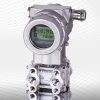 Underground Mining Intrinsically Safe Pressure Transmitters - Intrinsically safe pressure transmitters specifically certified for underground mining, engineered to prevent methane (firedamp) ignition. Robust, reliable, and compliant with stringent mining IS standards.
Underground Mining Intrinsically Safe Pressure Transmitters - Intrinsically safe pressure transmitters specifically certified for underground mining, engineered to prevent methane (firedamp) ignition. Robust, reliable, and compliant with stringent mining IS standards.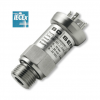 Landfill Site Intrinsically Safe Pressure Transmitters - Intrinsically safe pressure transmitters are essential for monitoring landfill gas pressure in hazardous environments.
Landfill Site Intrinsically Safe Pressure Transmitters - Intrinsically safe pressure transmitters are essential for monitoring landfill gas pressure in hazardous environments. Low Pressure Range Intrinsically Safe Pressure Transmitters - These intrinsically safe pressure transmitters are designed for precise measurement in hazardous areas where low pressure ranges are critical.
Low Pressure Range Intrinsically Safe Pressure Transmitters - These intrinsically safe pressure transmitters are designed for precise measurement in hazardous areas where low pressure ranges are critical.
Find out more about Intrinsically Safe Pressure Transmitters to determine which product options and capabilities will best meet your application requirements.
Intrinsically safe pressure transmitters are specialized instruments designed for operation in hazardous environments where flammable gases, vapors, or dust may be present. These transmitters are an integral part of a complete intrinsically safe system, ensuring that electrical and thermal energy levels remain below those required to ignite a specific hazardous atmospheric mixture. The key feature that distinguishes these transmitters is their certification, confirming compliance with stringent safety standards.
These pressure transmitters typically output a 4 to 20 milliamp signal, a standard industrial protocol for analog signal transmission. This current signal is proportional to the measured pressure. Crucially, the transmitter’s design, in conjunction with an intrinsically safe barrier (zener barrier or galvanic isolator), limits the maximum voltage and current that can enter the hazardous area, even under fault conditions. The intrinsic safety barrier is a critical component, placed outside of the hazardous zone, preventing an ignition source from being introduced.
The selection of an intrinsically safe pressure transmitter goes beyond the typical considerations of pressure range, accuracy, and material compatibility. It necessitates a deep understanding of the specific hazardous area classification, including the gas group and temperature class. This classification directly influences the certification requirements for the transmitter, ensuring that it’s appropriate for the specific flammable materials present. For example, a transmitter certified for use in a hydrogen environment (Group IIC) will have stricter design requirements than one intended for use in a propane environment (Group IIA).
A primary consideration is the entity providing the certification, such as ATEX or IECEx, FM, or CSA. These certifications are not universally interchangeable, and the specific requirements will depend on the geographical location and applicable regulations. Choosing a transmitter with the correct certification for your application’s location and hazardous environment classification is paramount.
Use cases for intrinsically safe pressure transmitters are diverse, spanning industries where flammable substances are handled or processed. Within a petrochemical refinery, they are used to monitor pressures in pipelines transporting volatile hydrocarbons. In underground coal mining, they measure the pressure of ventilation systems, essential to control methane gas buildup. Pharmaceutical manufacturing plants also rely on them to monitor the pressure of processes involving flammable solvents. The food and beverage industry, particularly within distilleries or grain processing facilities, represents another frequent application, requiring monitoring of pressure and control over any flammable materials present during normal operation, and under fault conditions.
The design of these pressure sensors includes construction to prevent any internal faults, which could generate enough energy, via sparks or heat to ignite the surrounding hazardous environment, therefore their installation requires extra special attention to ensure that they are correctly integrated as part of a complete intrinsically safe system.
